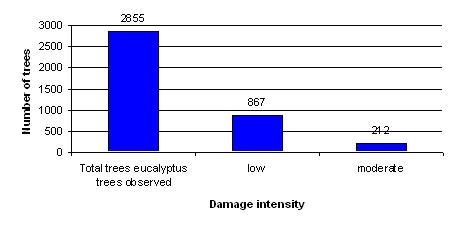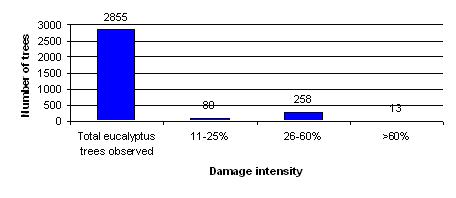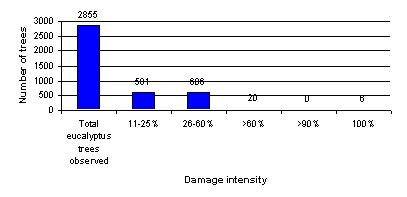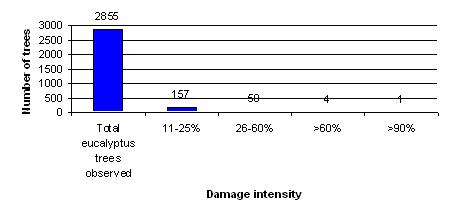4956,1 ha
Percentage of the total
forest area in Sousa Valley: 14,3 %
No of devices: 35
Costs
TOTAL COST: 2068,5 €
Costs/ha: 0,41 €
Costs/device: 59,1 €
The total cost includes:
1- Data collection: 1793,5 €
2- Data analysis: 275 €
Results
Leaves discoloration in Eucalyptus globulus
Source: Field sheet
Partially lost or eaten buds in Eucalyptus globulus
Source: Field sheets
Partially lost or eaten leaves in Eucalyptus globulus
Source: Field sheets
Damages caused by forest fires in Eucalyptus globulus
Source: Field sheets
Remarks
The results report Eucalyptus globulus since it is the main specie in Sousa Valley and also in the South of Paredes where the FORSEE devices were implemented. The main damages found in this specie were “leaves discoloration”, “lost or eaten buds”, and “eaten or partially lost leaves”.
More than one thousand of eucalyptus trees were affected with “leaves discoloration”. However, this discoloration is mainly slight discoloration. FORSEE field team suggests that “slight discoloration” in the leaves may be a result of the narrow compasses used in intensive forest management.
The intensity of the damage “lost or eaten buds” varies mainly between 26 and 60%.
The intensity of the damage “eaten or partially lost leaves” varies between 11 and 60%.
The intensity of the damage “forest fires” is almost negligible.
It has to be pointed that the number of eucalyptus trees affected with each type of damage is low compared with the total number of eucalyptus trees observed.
Problems and improvements
The methodology used by FORSEE field team (12/07/2005guideterrain.V16.en.v2) in order to assess forest health does not permit to assess the intensity of forest fires in Sousa Valley. The importance of eucalyptus stands, due to their productive functions, “obliges” the forest managers to remove the burnt trees from the stands and to replace the burnt stands with new trees. Then, the damages caused by forest fires are not strongly noticed during a health assessment in the field.
In Sousa Valley this indicator should consider also the area burnt every year per specie in order to understand the important damages caused by this abiotic agent.
Remarks and conclusion
According to data collected on the field, forest stands in Sousa Valley do not seem to have significant health problems caused by biotic agents. Even Pinus pinaster, that in Portugal have been suffered considerable attacks of pine processionary moth, in Sousa Valley seems to be protected against this agent. Of course, these evidences have to be analysed carefully since the number of Pinus pinaster trees observed was small and the period of assessment was not the recommended to observe this specie.
The main agent causing problems is abiotic – forest fires - and has been causing several damages in Pinus pinaster and Eucalyptus globulus stands. The intensity of these damages is not assessed by this methodology since the burnt stands, and consequently the burnt plots, are excluded from the sampling.
Forest damages (pests and diseases) is one of the indicators of Criterion 2 considered by NP 4406 2003. NP 4406 2003 considers that biotic agents, causing damages in the different parts of the plants are the main agents of forest decline. The fight against pests and diseases doing in advance and using direct measures (biologic fight, sanitarian cuts or traps, etc.) or indirect measures (resistant plants, appropriate forest management, etc.) together with an attitude of surveillance, are indispensable for the management of a good sanitarian condition in a sustainable forest.


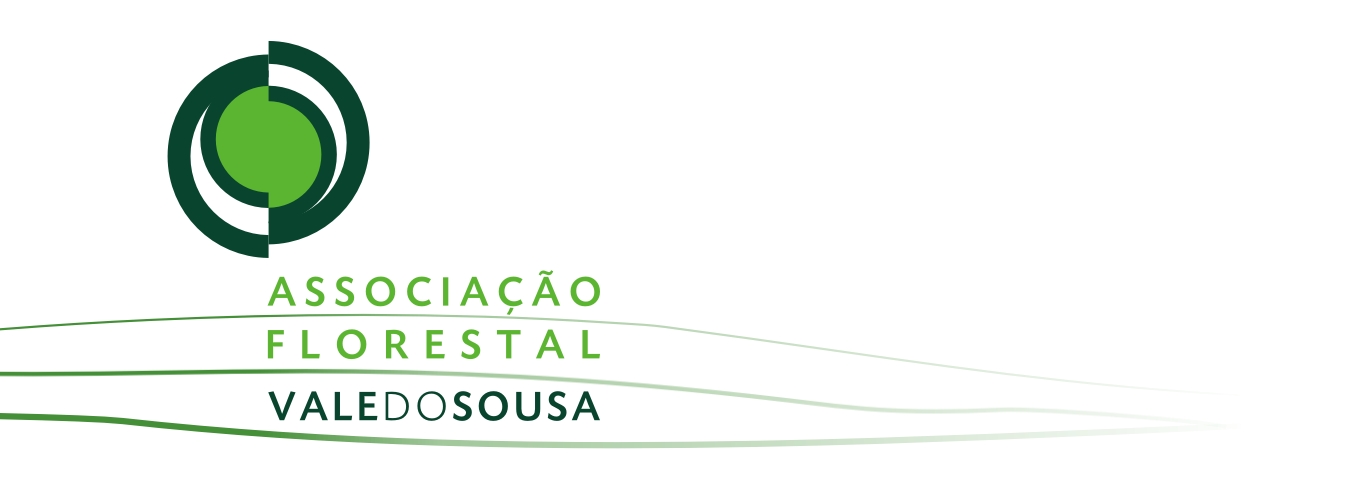

Initiative Communaitaire FEDER
INTERREG IIIB Espace Atlantique
